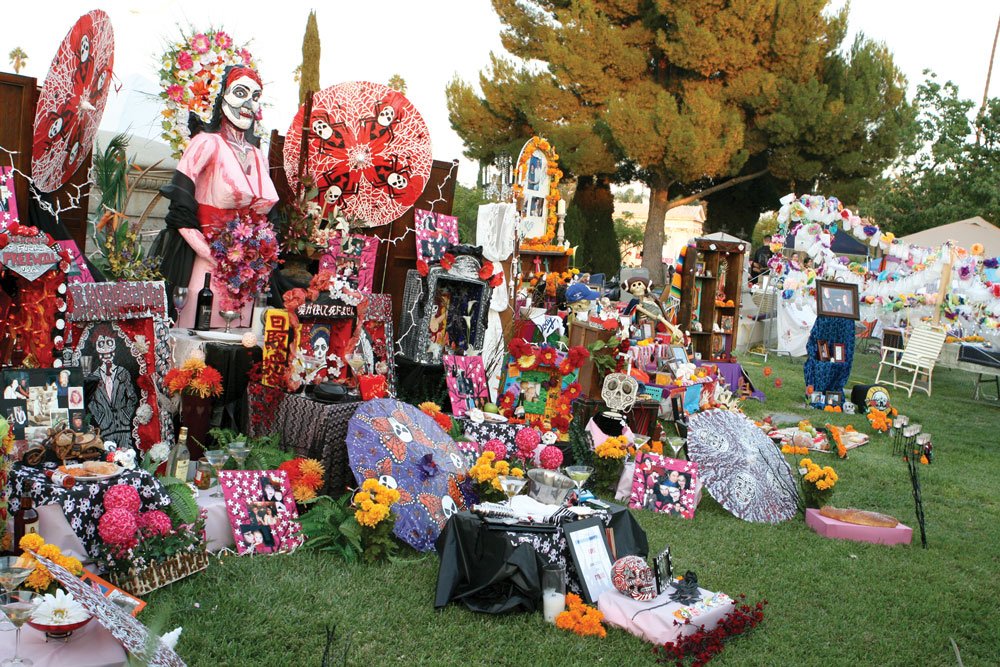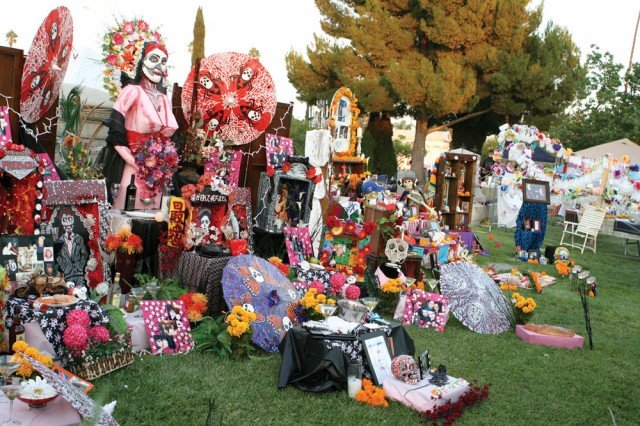
Día De Los Muertos is one of Mexico’s traditional holidays reuniting and honoring beloved ancestors, family and friends.
The holiday is celebrated over two days, on November 1 and 2. The roots of this celebration go back 3,000 years to pre-Hispanic cultures like the Aztecs, Mayans and Toltecas. When the Spaniards conquered Mexico, this indigenous custom was rooted so deeply that it survived centuries of European colonization.
For these ancient cultures, death wasn’t something to be feared. It was as much part of life as life itself.
Día de los Muertos (Day of the Dead) reflects this perspective. It is a happy celebration. Death is represented in whimsical, colorful ways. There is no place for weeping for this could be interpreted as offensive by the a dead relatives who are visiting gladly.
People build altars at home and at cemeteries to honor dead relatives and friends. To entice their souls to an earthly visit, they make offerings of their favorite foods and beverages. Photos of happy times and personal memorabilia of the deceased are also placed close by. The celebrations often turn humorous as family members remember funny anecdotes involving the deceased and leave items at the altar meant to remind them of such times.

Calaveras, or sugar skulls, are offered as a gift to both the dead and the alive. The sweet treat can be store-bought or homemade, in which case it becomes a family activity with children and adults decorating the skulls in bright colors.
Toy Coffins. These are made to delight the returning spirits of children, also referred to as ”angelitos‘ (little angels). There are usually enough of these at any given celebration to also be offered as party favors to the children who attend.
Marigolds. Bright and sunny, these yellow flowers are as emblematic of Día de los Muertos as poinsettias are of Christmas. They are used to decorate intricate arches, wreaths and crosses adorning altars, or are simply spinkled all over them. Some people make trails of marigold petals that lead to their houses from the cemetery to help the spirits of loved ones find their way home. These trails are sometimes lit with candles that offer a soft, comforting glow.
Mezcal and Tequila. A nice tequila is smooth like a fine cognac. Living beings aren’t the only ones who enjoy it. During Día de los Muertos, tequila, mezcal and other spirits are placed at the altars. The belief is that, after such a long treck from the other side, the spirits are likely to crave a drink.
Pan de Muertos. This sweet bread is a staple of the celebrations. Children dunk it in hot chocolate and adults in café con leche. In Mexico, street vendors have it readily available during the festivities although many families make it at home following individual family recipes.
Bright colors, but especially yellow, dominate the decor at Día de los Muertos.
Skulls were powerful symbols for the Aztecs. The head was believed to be a source of power and energy. The skull decorations and costumes that abound in the Día de los Muertos celebrations aren’t meant to be spooky. They are a symbol of strength, intelligence and even vitality.
Día de Los Muertos is a time of joyful celebration and remembrance. It is also a time to come to terms with our mortality and the cycle of life and death. Rather than fear death, this ancient celebration teaches to accept our mortality while enjoying life to its fullest.
[youtube JFt8-WdstQA 650]